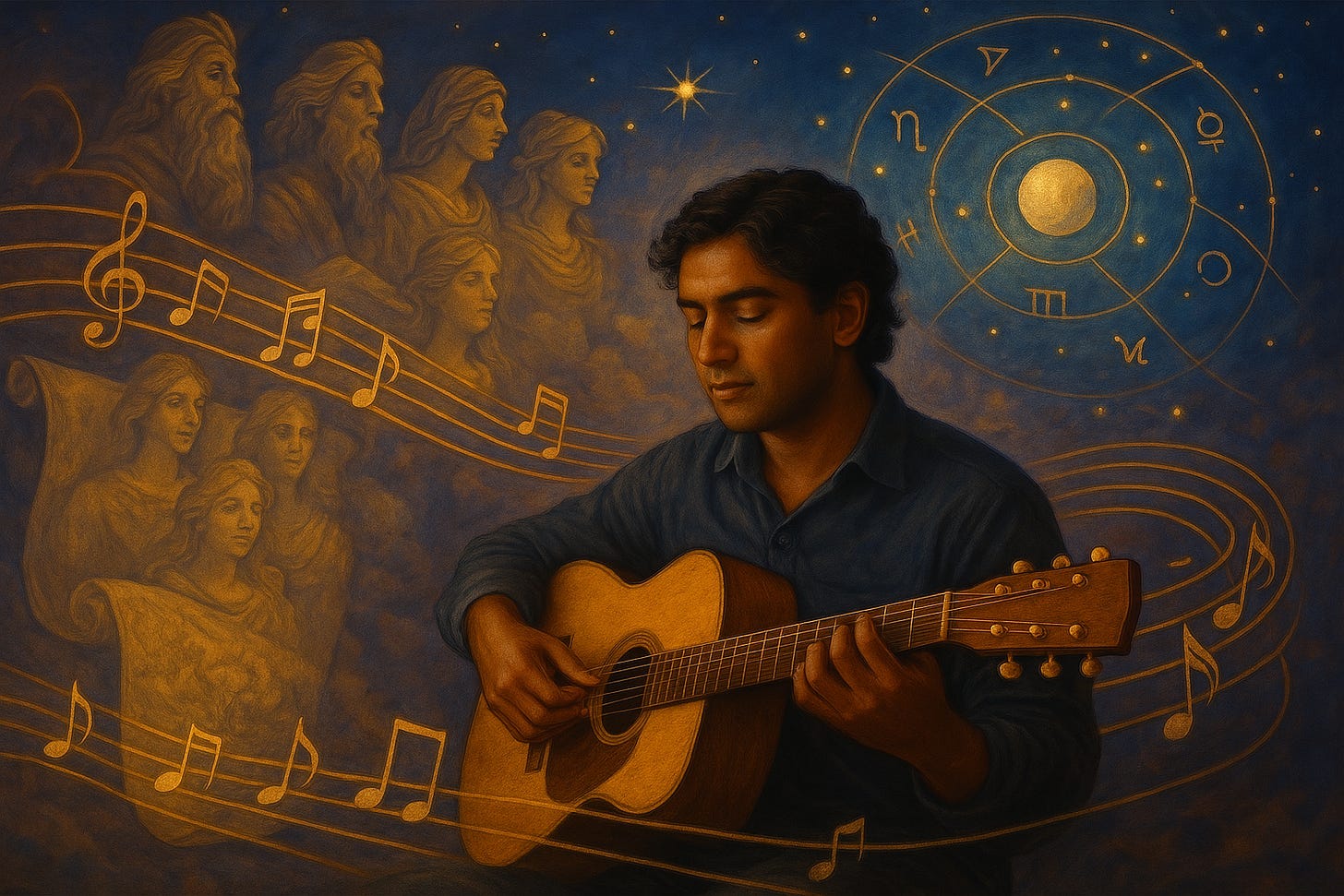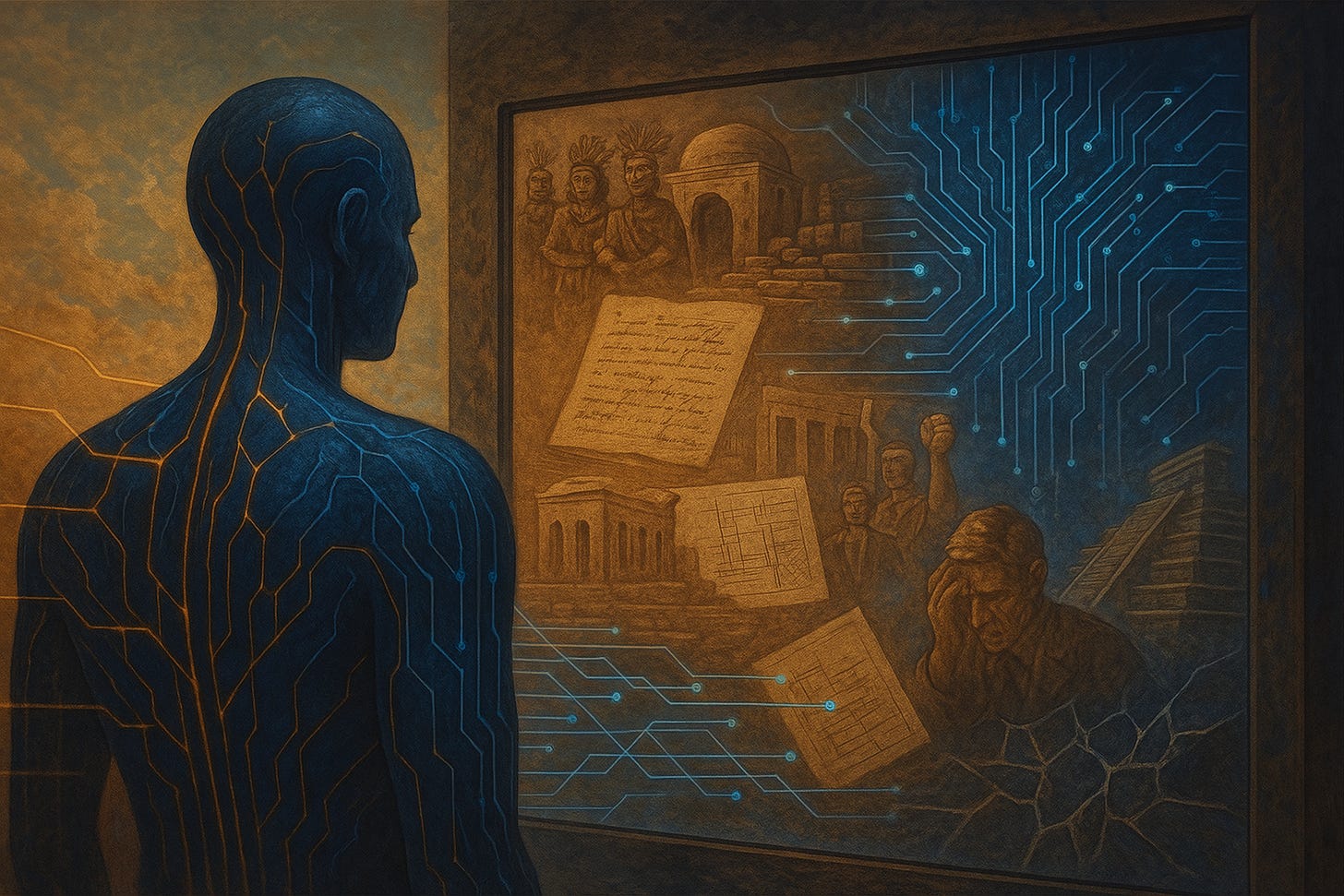When AI Learns Our Patterns, What Happens Next?
A meditation on history, collapse, and the rhythms we unknowingly pass on
I have always been obsessed with patterns. Growing up, I was engrossed in music. I practiced my guitar for hours, learning the patterns of chords, scales, and modes. Over the years, as my interest in mythology evolved, I became fascinated by patterns in ancient stories—seeing myths as imprints of something timeless. Even across thousands of years, the same archetypes seem to return, echoing the same truths. This curiosity also drew me into esoteric systems like astrology, where, once again, I discovered a deep awareness of patterns—this time celestial. I began to see astrology not just as symbolic storytelling but as a subtle science of observing cycles in the cosmos and recognizing their resonance in human lives.
Later, through my work in artificial intelligence systems, data labeling, and corporate technologies, I found myself once again confronted by patterns—this time in logic, structure, and system behavior.
When I studied communication—across cultures, in strategies, in systems—the same story unfolded. Patterns again. In how we speak, how we interpret, how we listen.
In more recent years, through a deep interest in psychology and therapeutic modalities, I came to see trauma as a kind of disruption in optimal patterning. Healing from traumas, too, seemed to hinge on patterns—the process of naming them, understanding them, and gently reorganizing them into something more whole or new.
This lifelong immersion has made it nearly impossible not to see patterns everywhere: in our societies, in our histories, in our wounds, and now, increasingly, in our technologies.
Human civilization isn’t random. It moves in patterns.
We rise, we conquer, we stagnate. We revolt, we collapse, we rebuild. These rhythms echo through history—from empires to ideologies, from economies to art. If you look closely, these aren’t just historical footnotes—they are blueprints. Patterns are our fingerprints quietly repeating across generations.
It’s not just that we exist in cycles. We are cycles.
Now, consider artificial intelligence (AI). It is, at its core, a socio-technical mirror. Its frameworks are molded by us—our behavior, our logic, our language, our archives of success and failure. Every input is a thread from our histories—woven from our behaviors, our victories, our fears. So when AI learns, it learns us—our actions, our structures, our collapses, and our rebirths.
If patterns govern human civilization, and AI is built based on those patterns, what kind of future are we engineering?
Could AI, in time, develop its very own evolutionary rhythm? Not just in terms of upgrades and performance, but in something deeper—its own cycles of growth, innovation, stagnation, and renewal. Would entire AI ecosystems develop a memory of their past states, encounter the limits of their knowledge, experience collapses of complexity, and emerge with new architectures—reborn in a form we hadn’t anticipated?
And if that’s true - are we creating tools, or are we laying the groundwork for civilizations that may one day have patterns of their own?
We often talk about training AI to be “more human.” But perhaps the deeper, more unsettling truth is this: we’re not training it to be like us in the moment—we’re training it to become us.
History, after all, doesn’t repeat itself—it rhymes. Will AI rhyme with us?
Or will it learn our rhythms only to break them?
An AI civilization, emerging from our patterns, could be the next rhyme in human evolution. If that does turn out to be true, how long would it be before it recognizes the rhythm—and decides to compose a new verse?
And maybe that’s what makes us human still—the hope that even our patterns can be rewritten.






